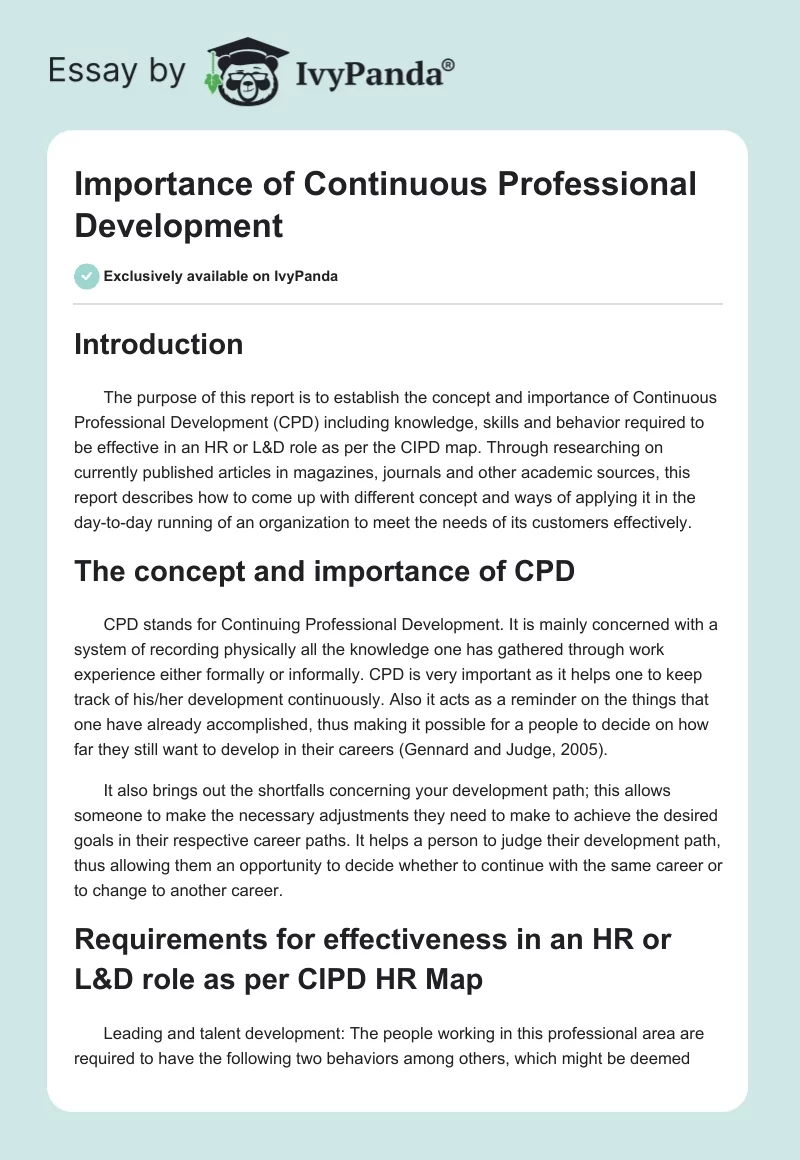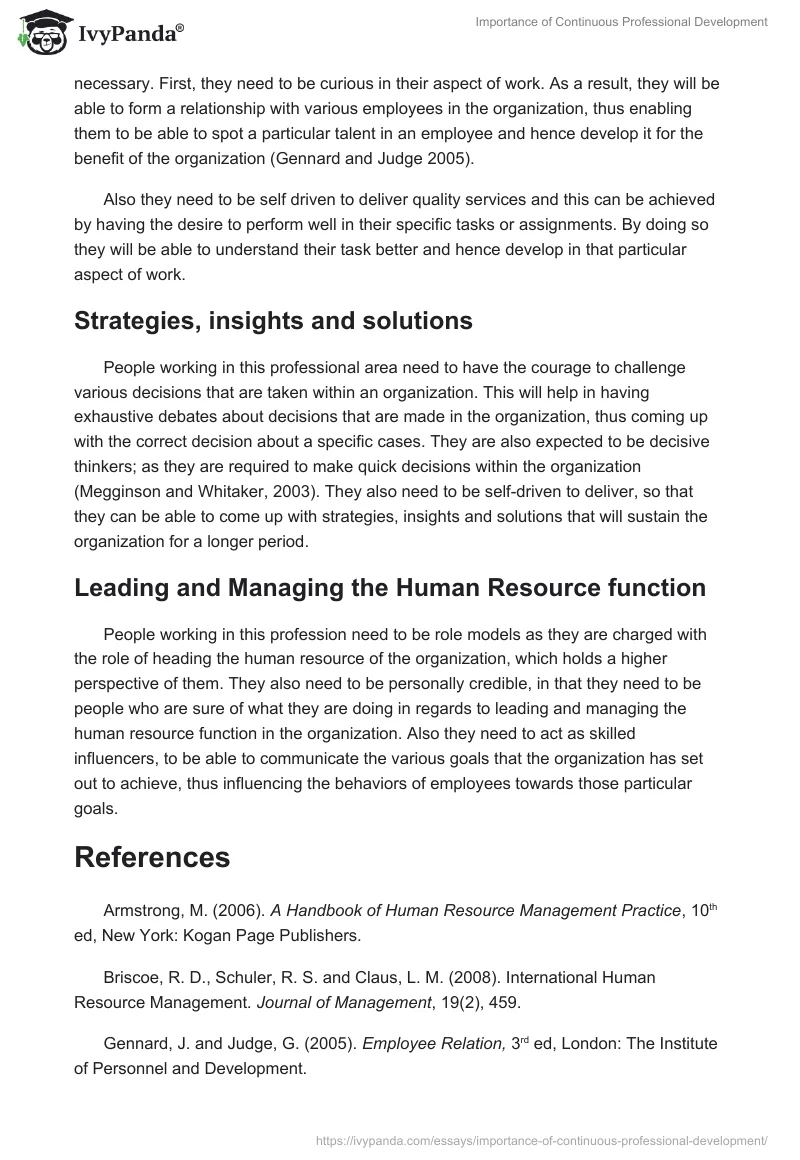Introduction
The purpose of this report is to establish the concept and importance of Continuous Professional Development (CPD) including knowledge, skills and behavior required to be effective in an HR or L&D role as per the CIPD map. Through researching on currently published articles in magazines, journals and other academic sources, this report describes how to come up with different concept and ways of applying it in the day-to-day running of an organization to meet the needs of its customers effectively.
The concept and importance of CPD
CPD stands for Continuing Professional Development. It is mainly concerned with a system of recording physically all the knowledge one has gathered through work experience either formally or informally. CPD is very important as it helps one to keep track of his/her development continuously. Also it acts as a reminder on the things that one have already accomplished, thus making it possible for a people to decide on how far they still want to develop in their careers (Gennard and Judge, 2005).
It also brings out the shortfalls concerning your development path; this allows someone to make the necessary adjustments they need to make to achieve the desired goals in their respective career paths. It helps a person to judge their development path, thus allowing them an opportunity to decide whether to continue with the same career or to change to another career.
Requirements for effectiveness in an HR or L&D role as per CIPD HR Map
Leading and talent development: The people working in this professional area are required to have the following two behaviors among others, which might be deemed necessary. First, they need to be curious in their aspect of work. As a result, they will be able to form a relationship with various employees in the organization, thus enabling them to be able to spot a particular talent in an employee and hence develop it for the benefit of the organization (Gennard and Judge 2005).
Also they need to be self driven to deliver quality services and this can be achieved by having the desire to perform well in their specific tasks or assignments. By doing so they will be able to understand their task better and hence develop in that particular aspect of work.
Strategies, insights and solutions
People working in this professional area need to have the courage to challenge various decisions that are taken within an organization. This will help in having exhaustive debates about decisions that are made in the organization, thus coming up with the correct decision about a specific cases. They are also expected to be decisive thinkers; as they are required to make quick decisions within the organization (Megginson and Whitaker, 2003). They also need to be self-driven to deliver, so that they can be able to come up with strategies, insights and solutions that will sustain the organization for a longer period.
Leading and Managing the Human Resource function
People working in this profession need to be role models as they are charged with the role of heading the human resource of the organization, which holds a higher perspective of them. They also need to be personally credible, in that they need to be people who are sure of what they are doing in regards to leading and managing the human resource function in the organization. Also they need to act as skilled influencers, to be able to communicate the various goals that the organization has set out to achieve, thus influencing the behaviors of employees towards those particular goals.
References
Armstrong, M. (2006). A Handbook of Human Resource Management Practice, 10th ed, New York: Kogan Page Publishers.
Briscoe, R. D., Schuler, R. S. and Claus, L. M. (2008). International Human Resource Management. Journal of Management, 19(2), 459.
Gennard, J. and Judge, G. (2005). Employee Relation, 3rd ed, London: The Institute of Personnel and Development.
Marchington, M. and Wilkinson, A. (2005). Human Resource Management at Work: People Management and Development, 3rd ed, London: The Chartered Institute of Personnel and Development.
Megginson, D. and Whitaker, V. (2003). Continuing Professional Development. London: The Chartered Institute of Personnel and Development.
Pavlina, S. (2008). Personal development for Smart People: Conscious Pursuit of Personal Growth, 1st ed, New York: Hay House.
Sypher, B. D. (1997). Case studies in organizational communication 2: Perspective on contemporary. Human Communication Research journal, 5, 20.


